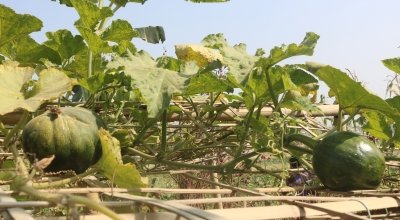
Knowledge Hub
Lockdowns and restrictions in this part of the world have inspired many of us to make the most of our garden and outdoor spaces. Some of us have tried our hand at growing our own fruit and veg – from potted herbs on windowsills to potatoes and carrots in vegetable patches.
Home gardens have been an integral part of family farming and local food systems around the world for centuries. The beginning of modern agriculture can be traced back to subsistence production systems that started in small garden plots around the household. These gardens have endured the test of time and continue to play an important role in Concern’s work to alleviate hunger and malnutrition for vulnerable families.
Both rural and urban

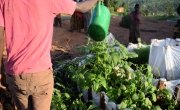
Home gardens are found in both rural and urban areas, and don’t need a lot of space to flourish. In rural settings, home gardens can be cultivated on land that is degraded and that would otherwise remain unproductive.
They are also highly effective in cities or areas with dense populations. Home gardens contained in jute, hessian or cotton sacks are being cultivated in places like Nairobi’s informal urban settlements, and Concern has developed slope gardening on hillside terraces in Cox’s Bazar – host to the world’s largest refugee camp in Bangladesh.
Close to home

They tend to be located within easy walking distance from the family home for security and convenience. That makes it much safer for those responsible for tending to the garden, including children or elderly people. It also means vegetables can be picked fresh and cooked straight away, preserving the nutrients.
Different names, shapes and sizes
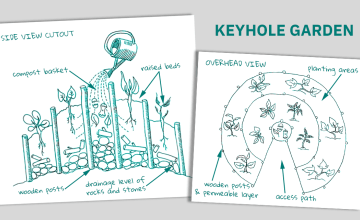
They can be referred to as mixed, kitchen, backyard, compound or homestead gardens, and come in all shapes and sizes – round, keyhole or square. They can also be made of sticks or stones, contained in sacks, recycled tins or even hanging from a wall.
New innovations and techniques have made home gardening possible even for families who have very little land or no land at all. Growing vegetables in restricted spaces eliminates laborious preparation work, and offers a way to produce a sufficient amount of food with limited space.
A production system for the most vulnerable

Home gardens are cheap and easy to build and maintain. That means they are ideal for communities with limited resources. Not only do they provide a ready supply of food to supplement the needs of a household, but any surplus can be sold to generate an income. This in turn enables families to buy other food staples like rice and beans, and even livestock for meat, eggs and milk – increasing their access to nutritious food.
Limited farming skills

While establishing and caring for a home garden requires a limited amount of farming skills, food production can be improved when families receive training and share essential knowledge. That’s why when Concern encourages households to build home gardens, it’s just as important to provide the know-how to improve technical skills, as well as the basics of tools and seeds.
Diversity of plants
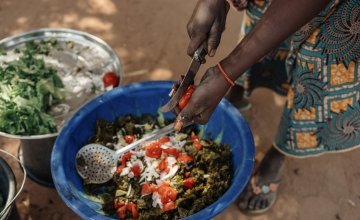
They contain a high diversity of plants which leads to an enriched and more balanced diet. The wide variety of fruit and vegetables - like aubergines, tomatoes and cucumbers, herbs and spices - such as chilies, parsley and coriander, and medicinal plants that can all be grown successfully in a home garden mean that families can enjoy a more diverse diet. That in turn helps to boost the body’s absorption of essential nutrients, including vitamins and minerals.
Environmentally friendly
Using kitchen waste, animal manure and other organic residues helps to considerably increase the productivity and fertility of home gardens. They also require only a small amount of water use for irrigation. And because it’s on a small scale, there is zero dependence on non-natural pesticides.
Withstand harsh environments

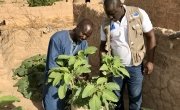
They are designed to produce the maximum possible amount of food throughout the year, even during dry spells. The innovative use of sacs potegers or vegetable sacks that Concern encourages families to embrace in semi-arid parts of Niger mean that the growing season for home gardens is not restricted by harsh or unpredictable environmental conditions such as drought and floods.
All in all, by increasing the availability, accessibility and diversity of food, home gardening makes a crucial contribution to household food security for at-risk communities. It leads to healthier families and is key to driving down hunger and malnutrition levels...one plant, one leafy green vegetable, and one small garden at a time.



